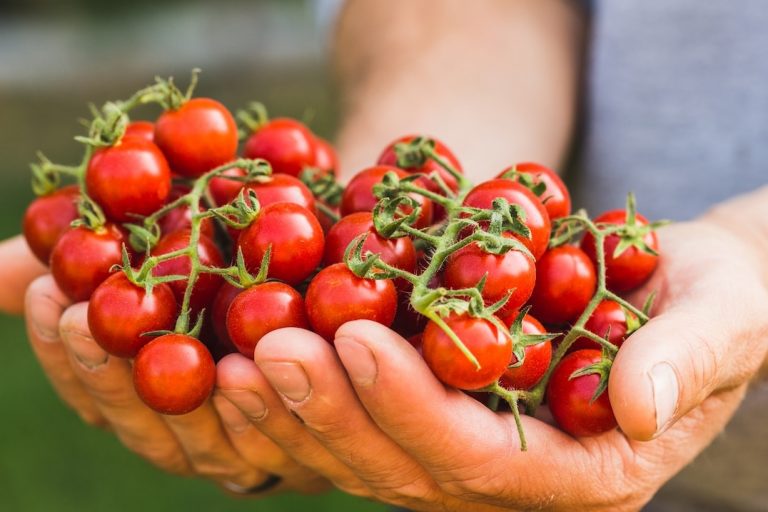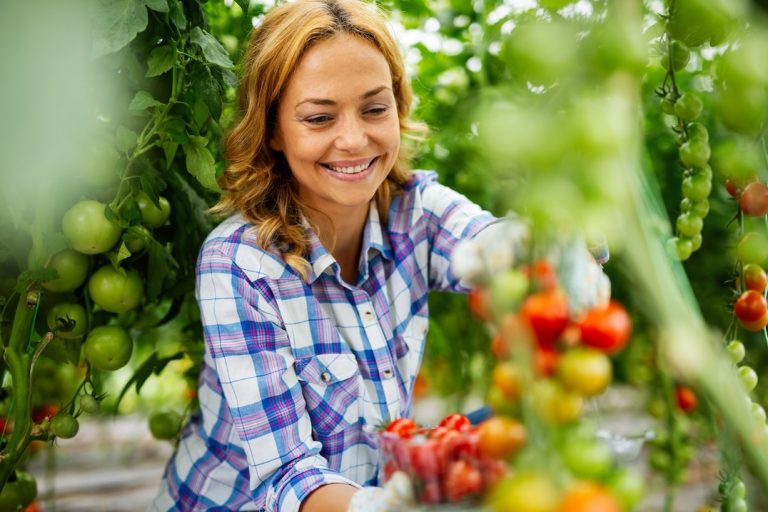Walk into any grocery store, and you’ll notice that greenhouse grown vegetables often appear perfectly uniform in size, shape, and color. Unlike their field-grown counterparts, which can have slight variations due to unpredictable weather, greenhouse vegetables are known for their consistency, smooth texture, and flawless appearance. But what exactly makes them look and feel so perfect?
Let’s break down the reasons why greenhouse grown vegetables maintain such a consistent look and feel compared to traditionally farmed produce.
1. Controlled Environment Eliminates Natural Stressors
Greenhouses provide a stable growing environment that eliminates many variables related to field growing.
Greenhouse Advantages:
- Stable temperatures – No extreme heat waves or unexpected frosts that can damage produce.
- Consistent humidity – Prevents moisture-related defects, such as cracking or tough skin.
- Protection from wind and rain – Ensures vegetables grow straight, smooth, and unblemished.
Example: Field-grown cucumbers often develop curves and bumps due to uneven sun exposure and rain, while greenhouse grown cucumbers are straight and smooth because they grow under even lighting and controlled humidity.
2. Precision Lighting for Even Growth
Greenhouses use LED lighting or natural sunlight diffusion to ensure uniform growth and ripening, providing balanced light exposure from all directions for consistent color and quality.
Benefits of Greenhouse Lighting:
- Prevents uneven ripening (no green streaks or sunburned spots).
- Allows vegetables to grow at the same rate, creating uniform sizes.
- Boosts nutrient absorption for more flavorful produce.
Example: Greenhouse tomatoes are bright red all over, while field-grown tomatoes often have patches of green or yellow because of inconsistent sun exposure.
3. Hydroponic and Soilless Growing Systems Improve Consistency
Many greenhouse vegetables are grown using hydroponic (water-based) systems instead of traditional soil. This method ensures that every plant receives the same amount of nutrients, water, and oxygen, resulting in identical growth patterns.
Why Hydroponic Farming Produces Uniform Vegetables:
- No soil contamination – Prevents nutrient deficiencies that cause uneven growth.
- Even nutrient distribution – Every plant gets the same precise mix of minerals and vitamins.
- Faster, controlled growth – Vegetables grow in a regulated environment, avoiding natural deformities.
Example: Greenhouse grown cucumbers typically have smoother skin and a more uniform shape, while those grown outdoors can develop thicker skins and uneven shapes due to fluctuating temperatures and inconsistent watering.
4. Consistent Watering Prevents Irregular Shapes
Greenhouses use precision irrigation systems that provide each plant with the exact amount of water it needs.
Benefits of Greenhouse Watering Systems:
- Prevents splitting and cracking – No sudden downpours causing excess water absorption.
- Ensures steady growth rates – Avoids stunted or oversized produce.
- Reduces need for pesticides – No waterborne soil diseases that affect crop health.
Example: Field-grown bell peppers may develop wrinkles, cracks, or soft spots due to inconsistent water intake, while greenhouse grown bell peppers have firm, smooth skin.
5. Pest and Disease Control Reduces Damage
Greenhouses use natural pest control methods like introducing ladybugs, predatory mites, or netting systems to keep crops healthy without heavy pesticide use.
Why Greenhouse Vegetables Look Healthier:
- No insect bite marks or holes from pests.
- Fewer chemical residues compared to field-grown crops.
- No fungal or bacterial growth that causes scarring or discoloration.
Example: Greenhouse grown tomatoes have smooth, flawless skin due to controlled humidity and pest prevention.
6. Year-Round Growing Means Consistent Produce Quality
Since greenhouses operate year-round, they eliminate the seasonal variations that affect outdoor crops. This means that greenhouse grown vegetables always look and taste the same, no matter the time of year.
Greenhouse Growing Eliminates Seasonal Variability:
- No extreme summer heat affecting growth rates.
- No winter frosts damaging crops.
- No delays in planting or harvesting due to weather conditions.
Example: Greenhouse Grown tomatoes are consistently sized and evenly ripened, with balanced flavor and firmness thanks to stable growing conditions and controlled light exposure.
7. Selective Breeding for Visual Appeal
Many greenhouses intentionally grow vegetable varieties that are naturally more uniform in appearance. Greenhouse growers often use carefully selected seeds that emphasize:
Desirable Traits for Consistency:
- Even color distribution (e.g., bright red tomatoes, deep green cucumbers).
- Firm, uniform texture for better shelf life.
- Symmetrical shape for easy packaging and transport.
Example: English cucumbers, which are almost always greenhouse grown, are long, thin, and consistently shaped, making them ideal for commercial sale.
Final Thoughts: Why Greenhouse Vegetables Look and Feel Perfect
Greenhouse grown vegetables have a consistent look and feel because they are produced in a highly controlled environment with precise light, water, nutrients, and pest control. The result? Flawless, uniform, and high-quality vegetables that are available year-round.
Key Reasons Why Greenhouse Vegetables Look Uniform:
- Controlled temperature and humidity prevent stress deformities.
- Precision lighting ensures even color and ripening.
- Hydroponic and soil-free growing systems eliminate irregularities.
- Automated watering prevents over- or under-hydration.
- Natural pest control keeps produce free of blemishes.
- Year-round growing eliminates seasonal inconsistencies.
Whether you’re buying tomatoes, cucumbers, or bell peppers, if they look perfectly shaped, smooth, and evenly colored, chances are they were grown in a greenhouse.




